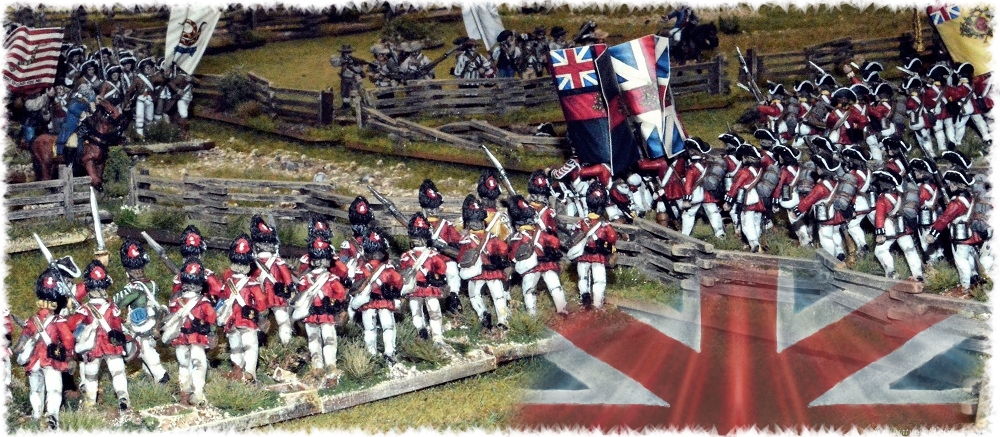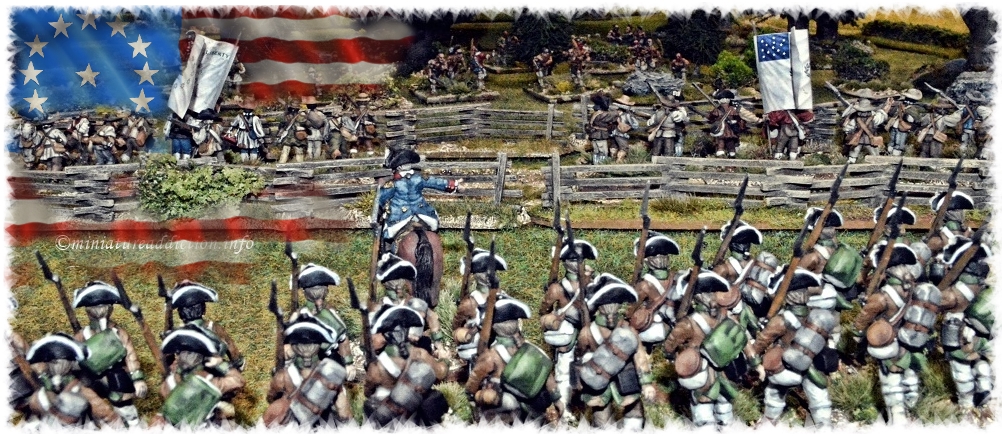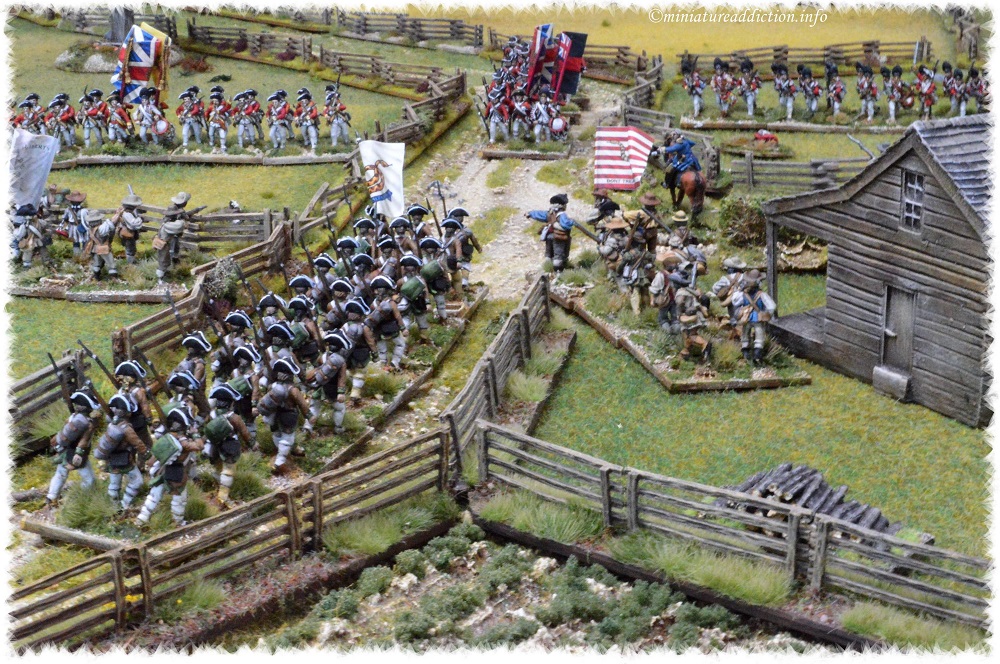
I’ve always fancied the Perry brother’s American war of independence figure range, but until now the conflict itself has never really sparked any interest in me. Originally I collected, painted and individually based enough figures to play some skirmish games using various French Indian war rule systems. Sadly that project quickly ran out of stream and looked destined to join the growing list of other such unfortunate ventures stashed in various cupboards around the house. This all changed when fellow gamer Keef introduced me to multiple brigade sized games of AWI. Keef has a knack for presenting challenging scenario based games which never fail to provide a great days entertainment. Needless to say things have snowballed somewhat since that first game at Keef’s place. By re-basing my FIW collection and some diligent painting nights I have managed to amass two fair sized armies in a relatively short space of time. On the following pages I plan to document my progress in this project with figure galleries and after action reports. Hopefully you the reader will find something of interest in this section of my web site.
▼Old French Indian War 30mm basing►
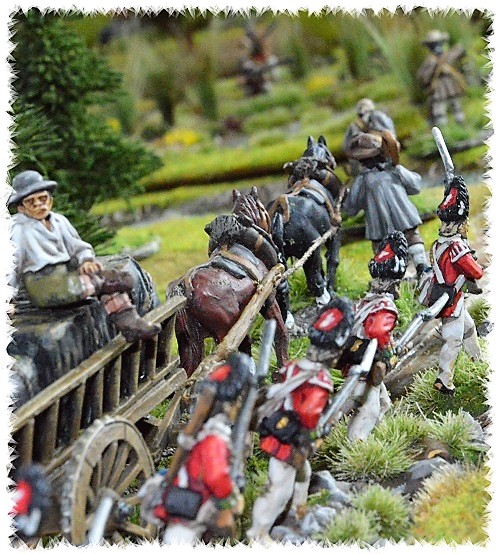
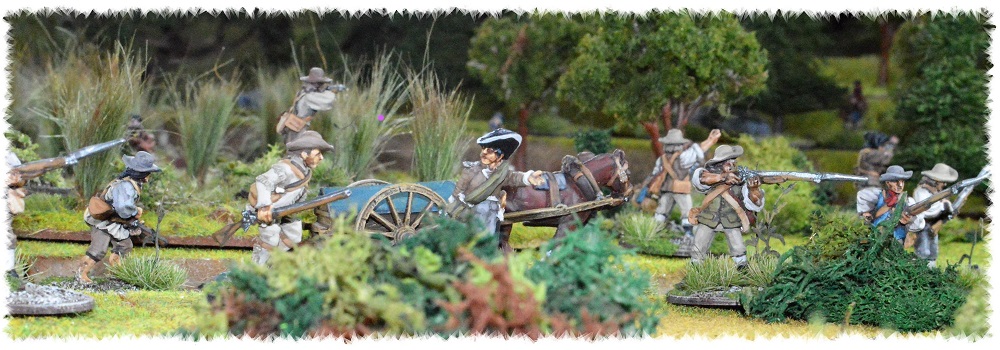
Rule options so far
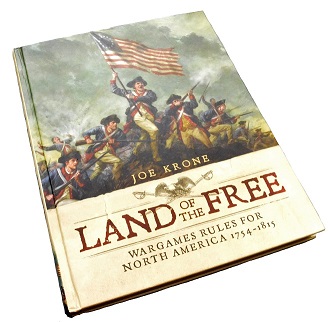
As you can well imagine there is a plethora of different rule books to chose from when gaming this period. Guaged on what I’ve read so far Black Powder seems to be very popular while British Grenadier is often cited as having a very historical feel. Although great systems in their own right, for reasons of personal preference I currently have no plans to try either system at this stage. I have however played a few very interesting test games of Washington’s Army and Land of the free.
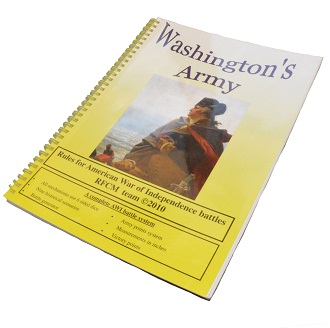
Both systems certainly have enjoyable aspects to their game play and as such won’t find themselves relegated to the dustier part of my book shelf any time soon. My personal mode of operation when looking into new rule systems is to hit You Tube and watch people actually play games or explain the basic rule mechanics. I tend not to place too much stock in written rule reviews as many (not all) seem to be written by people who are yet to try the very rules they are reviewing. Personally if I discover something about any system that appeals to me I’ll buy the book and give it a go. This generally means playing the rules strictly as written for quite a few games as I believe this is a must in order to gain a good understanding on how the rules work as a whole before you get to the bin it or keep it stage of the proceedings.

Figure basing-one size fits all
A common trend among some of the more modern rule systems is a move towards using set numbers of identically sized stands to represent the given strength of a unit. For example 150 to 250 troops maybe classed as a tiny unit comprised of only two stands where as four stands would represent a medium unit comprised of somewhere between 500 to 650 troops. With this in mind I’ve decided to paint a minimum of five stands (representing a large unit) for each of my regiments, thus giving each army a ton of flexibility when it comes to writing army lists or designing scenarios. Pictured below is a basic frame by frame example of how I went about basing figures for this period. Click here if you’d like to take a more detail view of what products and simple techniques I used to create this look.
Unit Uniforms
Researching regimental uniforms for this conflict has proven to be quite a challenge (especially for the continental forces). Information on any particular unit can range from vague to quite a few contradictory variations of the same uniform. These discrepancies have many causes such as conflicting eye witness accounts, theater or campaign uniform modifications, prior or post 1779 uniform issues to name just a few. Where possible I will attempt to include a basic uniform plate with each of the figure galleries posted on the connecting pages. My main resources for this information were the uniform leaflets included in both of the Perry brothers plastic book sets: John Mollo and Malcolm McGregor’s excellent book Uniforms of the American Revolution: Digby Smith and Kevin F. Kiley’s An illustrated encyclopedia of the uniforms of the American war of independence and the uniform guide on the Baccus web site. Pictured below is an example of just how confusing uniforms for this period can be, so forgive me if you already know better.

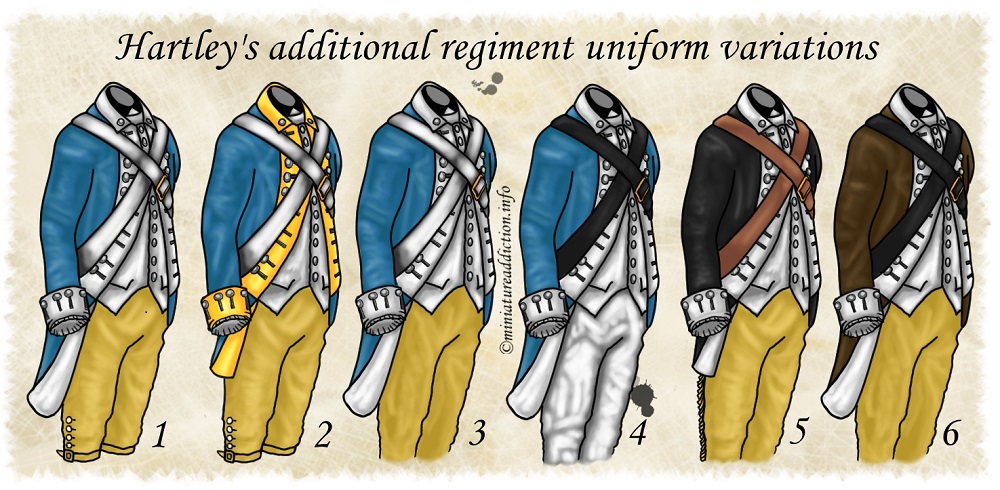
1 Is a rendition of a beautifully painted 75mm(?) figure found when searching Google images. He was depicted wearing a black cap, dark blue coat with white cross belts, facings and stockings. His breeches did look more of an off white colour as opposed to the buff breeches shown in my plate. 2: Is a copy of the uniform found on the Perry brothers Continental infantry leaflet. Dark blue coat with yellow facings, buff breeches and a black cap(with a black feather). The cross belts and stockings are not shown on the Perry’s rendition. A second figure is also shown in a black hunting shirt which due to cost and material shortages often replaced the standard coat all together. 3: This version is similar to the first one although the trousers are full length and buff. Again the hat type and cross belt were not detailed in the original drawing which can be found on the Baccus 6mm miniature site here. 4: Yet another version found on Google images, this soldier wears white breeches with black or no cross belts. Of note was his black cap which had a thick white ribbon around its base. 5. Sporting long buff overalls, tan leather cross belts and a floppy black hat this uniform is based on the one shown in Mollo and McGregor’s book. Interestingly the coat appears black in the illustration (or very very dark blue) but, the brief accompanying description mentions the 1777 Pennsylvania gazette which describes the regiment wearing blue coats. 6: Lastly an image shown on page 77 of Smith and Kiley’s book which also cites the blue coats described by the Pennsylvanian newspaper article but, then bizarrely shows a soldier in a brown coat with a floppy black hat.
Confused? cause I am, hopefully some of the information presented in this section of my web site will at least give you an idea on where to look or how you want your regiments to look before they hit the table.

